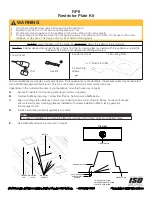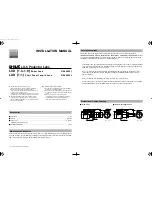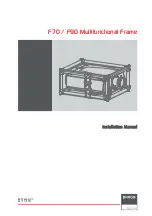
Model SDI-50 Manual, General Description
INSTALLATION
This section describes each connection required by the Model SDI-50
Interconnect. This section aiso describes optional jumpers on the
circuit board that can be used to customize the Model SDI-50 to your
particular transmitter-receiver combination.
Installation of the Model SDI-50 shouid be done by a qualified two-way
radio technician. Since the electrical components used are
susceptible to static damage, be sure to use static protection
techniques during the installation and level adjusting procedures.
During the installation, be sure that no power is applied to the
interconnect or radio.
Shielded cable shouid be used for all audio connections. To prevent
hum and noise due to ground loops, termínate the cable shield only at
the interconnect ground at the terminal block. The other end of the
shield must be left unconnected. Other connections to the Model SDI-
50 can be made using standard hook-up wire with sufficient current
rating. The best location for the interconnect is as close as
possible to the radio, thus allowing the shielded cables and wires to
be as short as possible.
4.1 TERMINAL BLOCK CONNECTIONS
Use the following instructions to make all connections to the terminal
block:
4.1.1 TBl-1,15,23 and 25 GROUND
These connection points are the main ground for the interconnect.
The GROUND connections, and chassis are common. Ground should be
connected directly to the "Common Ground Return" at the DC power
suppiy.
4.1.2 TB1-13 +VDC
This connection supplies DC power to the interconnect. This
connection shouid be made DIRECTLY to the +12 VDC power suppiy that
powers the radio equipment. If this is not available, any
reg12 VDC source with a current rating of at least 500 mA
may be used.
4.1.3 TB1-22 RELAY PTT OUTPUT
This connection is used for controlling the transmit function in
the associated transmitter. The PTT output shouid be connected to
the PTT line on the transmitter. As shipped from the factory, the
PTT output will próvido a relay contad pull to ground to key the
transmitter. If a pull to positive voltage is required to key the
Page # 7












































